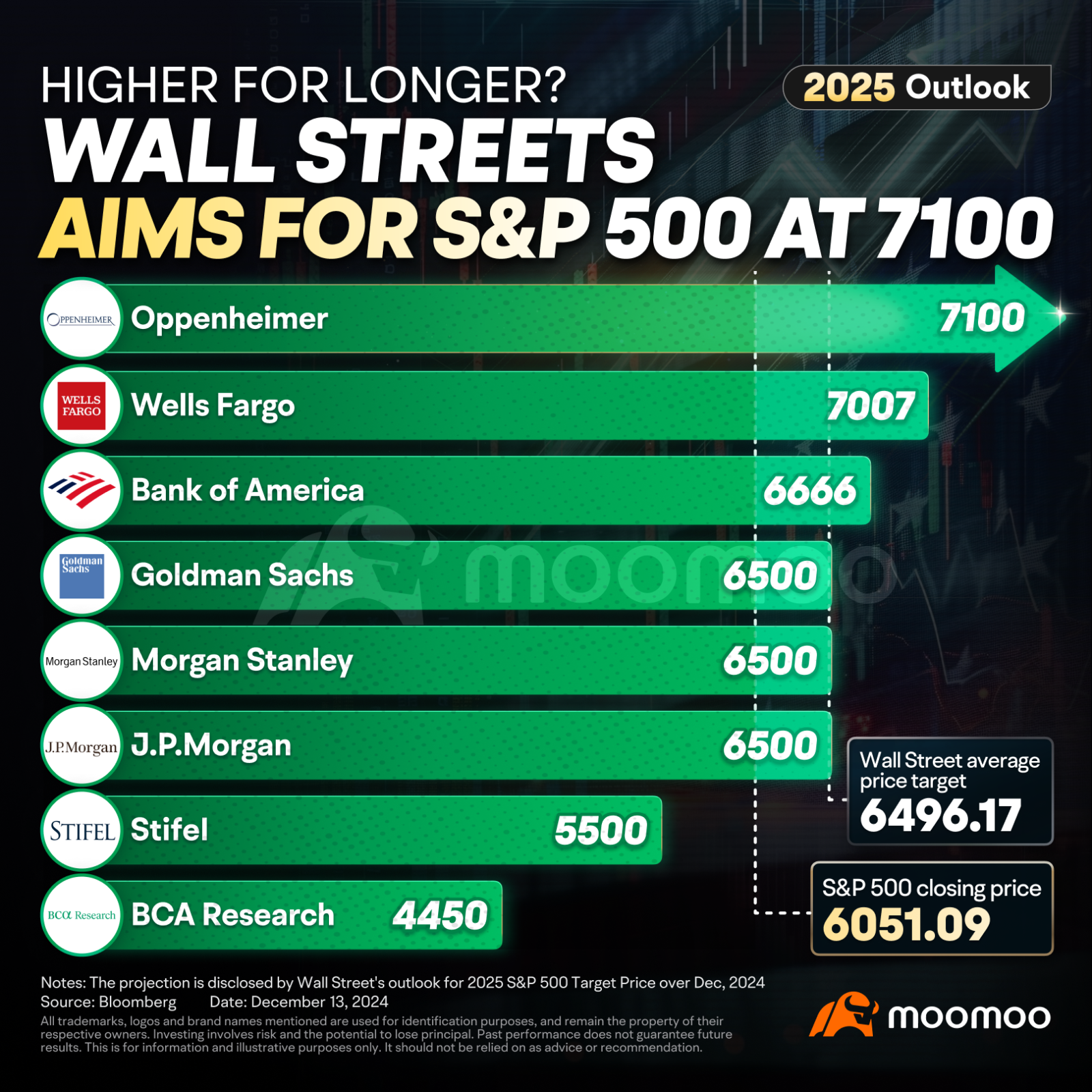Goldman Sachs projects the S&P 500 at 6,500, a 7.7% gain, based on 2024’s remarkable 26% growth. Their optimism stems from strong corporate earnings driven by solid GDP growth, a robust labor market, and continued tax cuts. These factors, they argue, will encourage capital expenditures on AI and productivity-enhancing equipment. Although Trump’s tariff policy posits some uncertainty, the Chief Economist of Goldman Sachs, Jan Hatzius, sees it in both ways, “less money in households and then that reduces demand elsewhere and that brings prices lower”, hinting that the tariff would not be as inflationary as the market thinks
